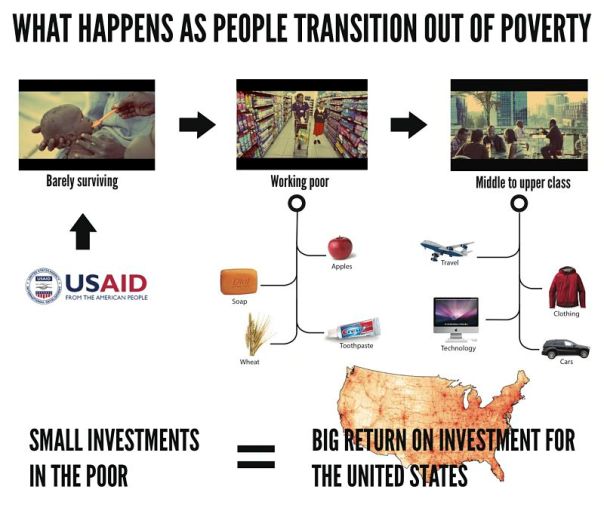I want you to make an estimate, without Google/Siri/any other assistance, of how much of the budget the United States spends on foreign aid every year. How much does the government spend on the military, in comparison? Did you say around 25% of our yearly budget goes to assisting other countries and, maybe, significantly less is put into our military?
If you did, you wouldn’t be alone. The average American believes that we spend a quarter of our money on helping impoverished people in other countries every year. The question then becomes, “why aren’t we helping our citizens instead? Why are we just giving it away to people we’ve never met and who are living so far away?” In answer to those questions, the same average U.S. citizen thinks we ought to slash our foreign aid to a measly 10%. Harsh, right?
The reality:
For us to spend 10% of the budget on aiding other nations, we would actually to spend 9% more rather than 15% less. Yes, the United States gives less than 1% to helping impoverished nations around the world. While $30 billion (roughly $73 per person) is spent on aid, a whopping $663 billion goes to our defense program. Does that seem a bit imbalanced? It should. As a comparison: we give 0.2% of our gross national income to countries in need and places like Sweden, Norway, and Luxemburg give 1.0% to aid projects.
Many people will say at this point, “Well after all these years of giving money, there haven’t even been any improvements! $30 billion is still a lot of money! Poverty hasn’t gone away, so why bother continuing?”
That isn’t exactly true, even though we haven’t been doing enough of our part to help others around the world; advancements have been made, and progress is apparent. For example:
- More than 3 million lives are saved every year thanks to USAID immunization problems.
- With the help of USAID, 21,000 farming families in Honduras have learned improved farming techniques and cultivation practices, reducing soil erosion by 70,000 tons.
- Investments by the United States in better seeds and agricultural practices have allowed us to feed an extra billion people across the globe.
So just imagine what we could do if we matched other countries in the amount we donate through USAID?
But what do we GET out of it?
We can see what other people get from our help, but how can our country benefit too?
As the flow chart shows, when we give aid to struggling nations, we do more than provide charity. The goal is to lift struggling countries out of poverty to ensure that they can stand on their own, and we don’t have to help them again. 95% of all potential consumers of United States products and services actually life outside of the country in these impoverished areas. But, to reach them we first have to help them. Once they become the working poor, they can start to purchase goods and services for themselves. As they keep transitioning, they become part of the middle and upper classes capable of purchasing even more.
43 out of the 50 top consumer nations were once on the receiving end of USAID. By helping them out of poverty and providing them with the opportunities they needed to succeed, we guaranteed that a whole new generation of consumers would be coming to us. In turn that creates more jobs in our country, which then helps us help our own poor get on their feet and further improves our economy and those around the world.
The adage goes, “you have to spend money to make money”. Well, it’s no different when it comes to building your own business and improving the economy of an entire country.
But that’s not all.
Foreign aid doesn’t just create new consumers; it also creates new allies by stopping conflicts before they start.
“The programs supported by the International Affairs Budget are as essential to our national security as defense programs. Development and diplomacy protect our nation by addressing the root causes of terrorism and conflict.”
– Former Homeland Security Secretary Tom Ridge
Poverty leaves conflict and strife in its wake. When people have to struggle just to survive, rebel groups, terrorists, and other factions arise; this causes us to spend even more on defense in case they decide to attack.
The fact is, though if we were to spend a little more of our yearly gross income on foreign aid we could end poverty in stricken areas and make the environment inhospitable for violent groups to expand. Less fighting abroad means we could spend less on defense and more on foreign aid as well as on aid for our citizens, overall a win for everyone in the world.
In conclusion:
Of course, it’s good to do the right thing and help people just for the sake of doing it. Everyone in the world deserves access to safe water, nourishing food, good shelter, education, and a better quality of life. But it’s impossible to deny that there are huge benefits for our country when we help other countries. There’s a chance we wouldn’t be the world power we are today if we hadn’t first helped other countries when they were struggling. The expansion of foreign aid will do nothing other than improve the world we live in and the lives of millions of people.


